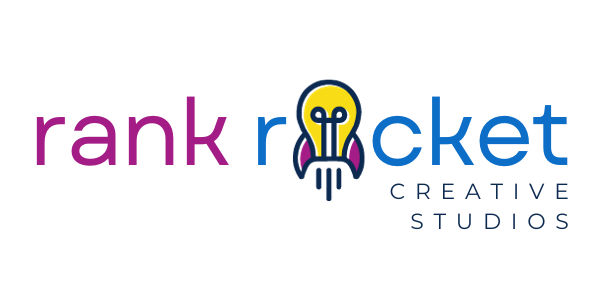Crafting a Captivating Brand Identity: Mastering Color Palette, Typography, and Logo Design

In today's competitive business landscape, establishing a strong visual identity is crucial for brands seeking to stand out and make a lasting impression. A captivating brand identity goes beyond just a logo – it encompasses the strategic use of color palette, typography, and logo design to convey your brand's personality, evoke emotions, and create a cohesive brand experience.
In this article, we will explore the importance of a strong visual identity, delve into the art and science of color psychology, dive deep into the world of typography, and uncover the secrets behind creating a memorable logo. Join us on this journey as we unlock the secrets to building a captivating brand identity that resonates with your audience and sets your brand apart from the competition.
I. Importance of a Strong Visual Identity for Brands
A. Captivating Audiences with Visual Appeal:
In today's visually-driven world, capturing the attention of your target audience is more challenging than ever. A strong visual identity acts as a powerful tool that helps your brand break through the noise, make a memorable impression, and establish a unique identity in the minds of consumers. It serves as the face of your brand, communicating its values, personality, and promise at a glance.
B. Building Brand Recognition and Trust:
Consistency is key when it comes to brand recognition. A well-crafted visual identity, including a carefully chosen color palette, typography, and logo, creates a cohesive and instantly recognizable brand presence. Over time, this consistency builds trust and familiarity with your audience, making them more likely to choose your brand over competitors.
C. Enhancing Brand Recall and Recall Value:
Humans are visual creatures, and we tend to remember images more easily than words. A strong visual identity aids in brand recall, enabling customers to quickly associate your brand with positive experiences, emotions, and values. When your visual identity resonates with your target audience, it creates a lasting impression that strengthens brand recall value, ensuring that your brand remains top-of-mind when they make purchasing decisions.
D. Setting Your Brand Apart:
In a crowded marketplace, differentiation is vital. A captivating visual identity provides a unique opportunity to stand out from the competition. By carefully crafting a color palette, selecting typography that aligns with your brand's personality, and designing a logo that encapsulates your brand essence, you create a distinct visual language that sets your brand apart and positions it as memorable and relevant.
In the following sections, we will explore the intricate elements of color psychology, the art of typography, and the significance of a well-designed logo. Join us as we unravel the secrets to building a visually captivating brand identity that leaves a lasting impression on your audience.
II. Unleashing the Power of Color Psychology
A. Evoking Emotions and Shaping Perceptions:
Colors have a profound impact on human emotions and can influence how people perceive and connect with your brand. Understanding the emotional associations of different colors is crucial in crafting a color palette that aligns with your brand's personality and values. Warm colors like red and orange evoke energy and passion, while cool colors like blue and green evoke calmness and trust. By strategically incorporating colors into your brand's visual identity, you can evoke specific emotions and shape the way your audience perceives your brand.
B. Aligning Colors with Brand Personality and Values:
Just as individuals have distinct personalities, so do brands. Your color palette should reflect the essence of your brand and align with its personality and values. For instance, a natural and eco-friendly brand may choose earthy tones to convey a sense of sustainability and environmental consciousness. It is essential to conduct thorough research and consider your target audience's preferences to ensure that the chosen colors resonate with their expectations and your brand positioning.
C. Selecting a Primary Color and Accent Colors:
When building your color palette, start by selecting a primary color that best represents your brand and creates a strong visual impact. This color will serve as the foundation of your brand's identity. Then, complement it with accent colors that harmonize and enhance the primary color. Accent colors can be used to draw attention to specific elements, create visual interest, or add depth to your brand's visual identity. Strive for a balance between a dominant primary color and carefully chosen accent colors that support and reinforce your brand's messaging.
D. Ensuring Color Consistency Across Platforms and Materials:
Consistency is vital in maintaining a strong visual identity. Ensure that your chosen color palette translates seamlessly across various platforms and materials. Test how your colors appear on different screens, in print materials, and across digital platforms to ensure their accuracy and consistency. Consistent use of colors enhances brand recognition and reinforces the identity and values your brand represents.
By harnessing the power of color psychology and selecting a well-thought-out color palette, you can create an emotional connection with your audience, communicate your brand's personality, and differentiate yourself in the market. In the next section, we will explore the art of creating a harmonious color palette to amplify the impact of your brand's visual identity.
III. Creating a Harmonious Color Palette
A. Exploring Color Harmony and the Color Wheel:
Color harmony refers to the pleasing combination of colors that work together cohesively. Understanding the fundamentals of color theory and the color wheel can guide you in creating a harmonious color palette for your brand. The color wheel consists of primary colors (red, blue, yellow), secondary colors (orange, green, violet), and tertiary colors (created by mixing primary and secondary colors). By leveraging color relationships such as complementary (opposite on the color wheel) and analogous (adjacent on the color wheel), you can craft a visually pleasing and balanced color palette.
B. Selecting Complementary and Analogous Colors:
Complementary colors create a vibrant contrast and can be used to draw attention or create impact. For example, pairing blue and orange can create a visually striking combination. Analogous colors, on the other hand, offer a more harmonious and soothing effect as they are closely related on the color wheel. For instance, combining shades of blue and green can create a calming and cohesive color palette. Experiment with different combinations to find the right balance that reflects your brand's personality and resonates with your target audience.
C. Establishing a Balanced Color Hierarchy:
A well-designed color palette should have a sense of hierarchy, with one or a few dominant colors and supporting accent colors. The dominant color(s) will be the primary color(s) that represent your brand, while accent colors add depth and versatility to your visual identity. Consider the psychological impact of different colors and strategically assign them roles within your brand's hierarchy. For example, use bold and vibrant colors sparingly to draw attention to important elements, while softer tones can be used for background or secondary elements.
D. Incorporating Shades, Tints, and Gradients for Depth and Versatility:
Adding shades (adding black), tints (adding white), and gradients (blending multiple shades or tints) to your color palette can enhance depth and versatility. These variations allow for different levels of contrast and visual interest within your brand's visual identity. Experiment with different shades, tints, and gradients of your chosen colors to create a diverse and adaptable color palette that can be applied across various brand touchpoints.
A harmonious color palette establishes visual coherence, enhances brand recognition, and evokes the desired emotional response from your audience. In the next section, we will delve into the significance of typography as the voice of your brand and explore how to choose the right fonts to communicate your brand's message effectively.
IV. Typography: The Voice of Your Brand
A. The Significance of Typography in Brand Communication:
Typography is more than just selecting fonts; it is the visual representation of your brand's voice and personality. The right choice of typography can evoke specific emotions, enhance readability, and create a consistent visual language that resonates with your target audience. Whether it's a bold and authoritative font or a playful and whimsical script, typography plays a crucial role in conveying your brand's message and making a lasting impression.
B. Determining the Right Font Styles and Families:
Fonts come in various styles and families, each with its own unique characteristics. Serif fonts, such as Times New Roman, convey a sense of tradition, reliability, and professionalism. Sans-serif fonts, like Helvetica, exude a modern, clean, and minimalistic vibe. Script fonts, like Pacifico, evoke elegance and creativity. When choosing fonts for your brand, consider your brand's personality, target audience, and the emotions you want to evoke. Select a font style and family that aligns with your brand's identity and resonates with your audience.
C. Pairing Fonts for a Harmonious Typographic Palette:
Combining different fonts is an art form that requires careful consideration. It's important to strike a balance between fonts that complement each other and create a harmonious typographic palette. Pairing fonts with contrasting characteristics, such as a bold headline font with a clean and legible body font, can create visual interest and hierarchy. Ensure that the fonts you choose have sufficient contrast in terms of weight, size, and style to maintain readability and convey your brand's message effectively.
D. Balancing Readability and Brand Personality:
While it's essential to infuse your brand's personality into the typography, readability should never be compromised. Ensure that the fonts you select are easy to read, both in print and digital formats. Consider factors such as letter spacing (kerning), line spacing (leading), and font size to optimize legibility. Your typography should enhance the user experience and facilitate clear communication, allowing your audience to effortlessly engage with your brand's content.
E. Ensuring Consistent Typography Across Various Media:
Consistency is key when it comes to typography. Establishing clear guidelines for font usage and formatting ensures that your brand's typography remains consistent across different media and touchpoints. Create a typography style guide that outlines font choices, font sizes, and formatting rules for headings, subheadings, body text, and other elements. This ensures that whether it's a website, social media post, or printed collateral, your brand's typography maintains a cohesive and professional appearance.
By paying attention to typography and selecting fonts that align with your brand's personality, you can effectively communicate your brand's voice and establish a cohesive visual identity. In the next section, we will explore how to find inspiration, conduct research, and gather feedback to inform your brand's visual identity decisions.
V. Finding Inspiration and Conducting Research
A. Gathering Inspiration from Successful Brands:
When embarking on the journey of building your brand's visual identity, it's essential to seek inspiration from successful brands that have effectively captured their target audience's attention. Analyze brands within your industry or related fields that have achieved recognition and resonate with their audience. Explore their color palettes, typography choices, and logo designs to understand how these elements work together to create a cohesive and impactful visual identity. While it's important to draw inspiration, remember to maintain your brand's uniqueness and authenticity.
B. Utilizing Online Resources and Design Platforms:
The internet is a treasure trove of resources for brand design inspiration. Explore design websites, blogs, and online platforms dedicated to showcasing successful brand identities. Websites like Behance, Dribbble, and Pinterest are great sources for curated design inspiration. These platforms feature a wide range of design styles, color palettes, and typography examples that can spark creativity and help you explore different visual directions for your brand.
C. Analyzing Competitors' Color Palettes and Typography Choices:
Conducting competitive analysis is a crucial step in understanding the landscape and positioning of your brand. Study your competitors' visual identities, including their color palettes and typography choices. Analyzing their choices can provide insights into industry norms and help you identify opportunities to differentiate your brand. While it's important to be aware of what your competitors are doing, aim to create a visual identity that sets your brand apart and resonates uniquely with your target audience.
D. Conducting User Research and Gathering Feedback:
Your audience's preferences and perceptions play a vital role in shaping your brand's visual identity. Conduct user research, such as surveys or focus groups, to gather feedback on color preferences, typography styles, and logo designs. This valuable input can provide insights into how your target audience perceives different visual elements and help you make informed decisions that resonate with their expectations. Additionally, feedback from internal stakeholders and design professionals can offer valuable perspectives and ensure a well-rounded approach to refining your brand's visual identity.
By actively seeking inspiration, conducting thorough research, and incorporating user feedback, you can ensure that your brand's visual identity is informed by industry best practices and tailored to resonate with your target audience. In the next section, we will provide practical tips for implementing and testing your color palette, typography, and logo designs to ensure they are visually appealing and align with your brand's objectives.
VI. Practical Tips for Implementation
A. Testing Color Combinations and Typography on Different Backgrounds:
Colors and typography can appear differently depending on the background they are placed against. It's crucial to test your chosen color combinations and typography on various backgrounds, such as light, dark, or patterned surfaces. This ensures optimal readability and visual harmony across different contexts. Pay attention to the contrast between text and background to ensure legibility, and make adjustments as needed to create a visually pleasing and accessible design.
B. Considering Accessibility and Inclusivity in Color and Font Choices:
Accessibility is a key consideration in modern design. Ensure that the color palette and typography choices meet accessibility standards, such as providing sufficient color contrast to accommodate individuals with visual impairments. Consider using tools and resources, like color contrast checkers, to ensure that your color combinations adhere to accessibility guidelines. Additionally, choose fonts that are legible across different screen sizes and platforms, catering to users with varying visual abilities.
C. Documenting and Organizing Brand Guidelines for Consistency:
To maintain consistency across your brand's visual identity, it's essential to document and organize brand guidelines. These guidelines should include details about your color palette, typography, logo usage, and any specific design rules that reflect your brand's identity. Brand guidelines serve as a reference for internal teams, external partners, and designers, ensuring that everyone involved maintains a cohesive and unified visual representation of your brand.
D. Collaborating with Designers and Professionals for Expert Advice:
Designing an effective visual identity requires expertise and creative input. Collaborating with experienced designers and professionals can provide valuable insights and guidance throughout the process. They can help you refine your color palette, typography choices, and logo design to align with your brand's objectives and target audience. Leverage their expertise to create a visually impactful and cohesive brand identity that resonates with your audience.
By implementing these practical tips, you can ensure that your brand's visual identity is not only visually appealing but also functional, inclusive, and consistent across various platforms and materials. In the next section, we will delve into real-life case studies of successful branding examples, where we will analyze renowned brands and explore how their color palettes, typography choices, and logo designs have contributed to their overall brand perception and success.
VII. Examining Successful Branding Examples
A. Analyzing Renowned Brands and Their Effective Color Palettes, Typography Choices, and Logo Designs:
Let's delve into some real-life examples of successful branding to gain deeper insights into the impact of color palettes, typography choices, and logo designs on brand perception. By examining these brands, we can learn valuable lessons and apply them to our own visual identity strategies.
- Coca-Cola is a globally recognized brand known for its iconic red color and distinct typography. The brand's red color evokes feelings of passion, energy, and excitement, aligning with its youthful and dynamic image. The typography, with its bold, curvy script font, adds a touch of nostalgia and captures the brand's rich heritage. The combination of the vibrant red color and unique typography has played a significant role in establishing Coca-Cola's brand recognition and making it instantly identifiable across various platforms.
- Apple is renowned for its clean, minimalist aesthetic and sophisticated branding. The brand's color palette predominantly features white and shades of gray, emphasizing simplicity, elegance, and a sense of premium quality. The typography choices, primarily utilizing the San Francisco font, communicate modernity and readability. Apple's logo, a bitten apple, is a simple yet instantly recognizable symbol that conveys innovation and the brand's connection to technology. The consistency in color, typography, and logo design throughout Apple's branding has contributed to its reputation for sleek and user-friendly products.
B. Exploring the Impact of Color and Typography on Brand Perception:
Colors and typography have a powerful influence on how brands are perceived and the emotions they evoke. Let's explore how these elements shape brand identity and connect with the target audience.
- Airbnb 's color palette features a vibrant combination of coral, deep teal, and neutral grays. This blend creates a warm and inviting atmosphere, reflecting the brand's focus on providing unique and comfortable accommodations worldwide. The typography, utilizing the custom-designed "Cereal" font, strikes a balance between modernity and approachability. The color palette and typography work harmoniously to communicate a sense of adventure, community, and trust, aligning with Airbnb's mission of creating meaningful travel experiences.
- Nike 's bold and energetic branding relies on a distinctive color palette of black, white, and the iconic "Nike red." The contrasting black and white colors represent power, simplicity, and elegance, while the red energizes and conveys a sense of athleticism. Nike's typography features the "Futura" font, known for its clean lines and versatility, which complements the brand's dynamic image. The combination of impactful colors and typography reinforces Nike's position as a leading sports brand and resonates with athletes and fitness enthusiasts.
C. Discussing the Role of Logo Design in Brand Recognition:
Logos serve as the visual representation of a brand and play a crucial role in building recognition and establishing a brand's identity. Let's examine the significance of logo design in successful branding.
- McDonald's golden arches logo is one of the most recognizable and iconic logos globally. The yellow color represents joy, warmth, and happiness, while the arches form an "M," symbolizing the brand's name. The simplicity and memorability of the logo have contributed to McDonald's brand recognition and the association of its logo with fast food and convenience.
- FedEx 's logo is a prime example of how subtle design elements can make a significant impact. The logo incorporates a hidden arrow between the letters "E" and "x," symbolizing forward motion, speed, and efficiency. The combination of purple and orange in the logo creates a sense of reliability, professionalism, and enthusiasm that aligns with FedEx's positioning as a reliable and fast delivery service. The clean and bold typography ensures readability and reinforces the brand's no-nonsense approach.
These examples highlight the importance of thoughtful color palettes, typography choices, and logo designs in successful branding. By analyzing renowned brands like Coca-Cola, Apple, Airbnb, Nike, McDonald's, and FedEx, we can gain insights into how these elements work together to create a cohesive and impactful brand identity.
Studying these examples can inspire us to make informed decisions when building our own brand's visual identity. However, it's important to remember that each brand is unique, and what works for one may not necessarily work for another. It's crucial to consider your brand's values, target audience, industry, and desired perception when developing your color palette, typography, and logo design.
VIII. Conclusion
Building a visual identity is not a one-time task; it requires continuous evaluation and evolution to stay relevant and compelling. It's crucial to periodically assess the effectiveness of your color palette, typography, and logo design. Stay updated with design trends and consumer preferences and be open to making adjustments that align with your brand's evolving goals and target audience.
While learning from successful examples and industry best practices, it's equally important to infuse your brand with creativity and uniqueness. Experiment with color palettes, typography styles, and logo designs to create a distinctive visual identity that resonates with your target audience. However, always ensure that your creative decisions align with your brand's core values, personality, and overall identity.
At MediaVantage, we understand the importance of a strong visual identity in building a successful brand. Our team of experts is passionate about helping businesses create compelling visual identities that reflect their brand's essence and connect with their audience.
Contact us at 434.373.7700 or visit our website at www.gainmediavantage.com to learn more about how we can assist you in developing a visually impactful brand identity that sets you apart.
Remember, your brand's visual identity is a powerful tool in conveying your message, values, and personality to your audience. By understanding the importance of color palettes, typography choices, and logo designs, conducting research, and staying adaptable, you can create a visually compelling brand that leaves a lasting impression.
Additional Resources and Further Reading:
Suggested books, articles, and online tools for brand design:
- Airey, David. "Logo Design Love." Peachpit Press, 2014.
- Adams, Sean. "Color Design Workbook." Rockport Publishers, 2008.
- Lupton, Ellen. "Thinking with Type." Princeton Architectural Press, 2010.
- Canva Design School. "Learn Design." Accessed on July 2, 2023. Available at: https://www.canva.com/learn/
- Adobe Color. "Create and Explore Color Schemes." Accessed on July 2, 2023. Available at: https://color.adobe.com/



